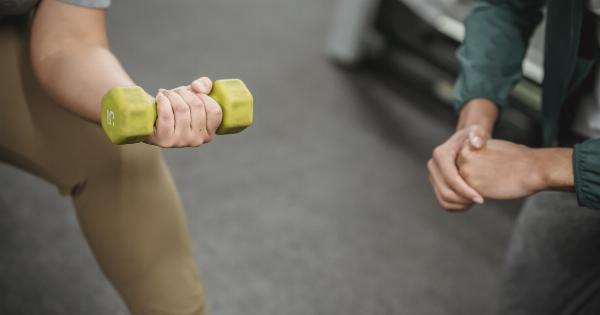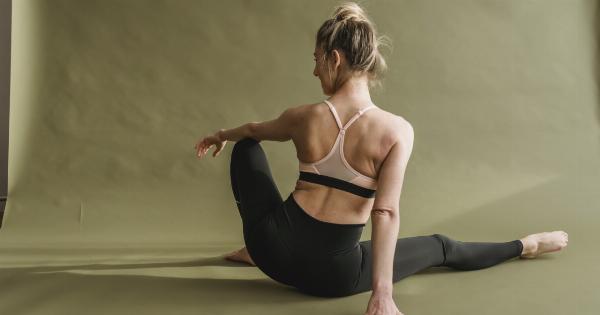Dealing with incontinence can be a daily struggle for many individuals. The involuntary loss of urine or feces can be embarrassing and often leads to feelings of isolation.
While there are various treatment options available, exercise can play a crucial role in managing and even overcoming this condition. In this article, we will explore the importance of exercise in combating incontinence and provide an effective exercise plan to help you regain control of your bladder and bowel.
Understanding Incontinence and Its Causes
Incontinence is a prevalent condition that affects millions of people worldwide. It can be caused by various factors such as weak pelvic floor muscles, nerve damage, hormonal imbalances, and certain medical conditions.
The most common types of incontinence include stress incontinence, urge incontinence, mixed incontinence, and overflow incontinence. Each type requires a tailored approach for effective management.
The Role of Exercise in Managing Incontinence
Exercise is often overlooked as a potential solution for incontinence, but it can have a significant impact on improving bladder and bowel control.
Regular physical activity helps strengthen the pelvic floor muscles, which play a vital role in controlling urinary and fecal continence. Additionally, exercise aids in weight management, as excess weight can put additional stress on the bladder and worsen incontinence symptoms.
Designing an Effective Exercise Plan
Before starting any exercise routine, it is important to consult with your healthcare provider or a qualified physical therapist to ensure that it is safe and suitable for your specific condition.
Here is a comprehensive exercise plan that can help you in your battle with incontinence:.
1. Kegel Exercises
Kegel exercises are one of the most effective ways to strengthen the pelvic floor muscles. These exercises involve contracting and relaxing the muscles used to control urinary and bowel movements.
Start by squeezing the pelvic floor muscles for a few seconds and then releasing them. Aim to complete three sets of ten repetitions each day, gradually increasing the duration of the contractions over time.
2. Bridge Pose
The Bridge pose is a wonderful exercise for strengthening the glutes and core muscles, which are important for maintaining bladder control. Lie on your back with your knees bent, and feet flat on the floor.
Slowly lift your hips off the ground, keeping your core engaged. Hold this position for a few seconds before gently lowering your hips back down. Repeat this exercise ten times.
3. Squats
Squats are excellent for targeting multiple muscle groups, including the pelvic floor, glutes, and thighs. Stand with your feet shoulder-width apart and slowly lower your body as if you are sitting down.
Keep your back straight and your knees in line with your toes. Return to the starting position and repeat the motion for ten repetitions.
4. Aerobic Exercises
Aerobic exercises such as walking, swimming, or cycling can have numerous benefits for those dealing with incontinence.
Engaging in at least 150 minutes of moderate-intensity aerobic activity per week can improve overall bladder control and promote weight loss.
5. Yoga
Yoga is known for its ability to enhance flexibility, improve strength, and promote relaxation.
Practicing yoga poses that target the pelvic floor, such as the Child’s Pose or the Goddess Pose, can be highly beneficial in strengthening the muscles responsible for urinary continence.
6. Pelvic Floor Massage
In addition to exercises, self-massaging the pelvic floor muscles can help alleviate tension and promote blood flow to the area, thus improving muscle strength.
Using a clean finger, gently apply pressure to the muscles and perform small circular motions. Gradually increase the pressure as tolerated, and remember to breathe deeply and relax during the process.
7. Hydration and Diet
Proper hydration and a well-balanced diet are important factors in managing incontinence. It is essential to drink enough water throughout the day to maintain healthy bladder function.
Additionally, incorporating fiber-rich foods into your diet can prevent constipation, which can worsen incontinence symptoms.
8. Bladder Training
Bladder training involves gradually increasing the time between bathroom visits to improve bladder control. Start by trying to delay urination by a few minutes and gradually increase the time as you progress.
This technique can be helpful for individuals experiencing urge incontinence.
9. Biofeedback
Biofeedback therapy involves using sensors to monitor muscle activity and provide visual or auditory feedback. This technique helps individuals learn how to control and strengthen their pelvic floor muscles effectively.
Consult a healthcare professional or physical therapist to explore this option.
10. Emotional Well-being
Lastly, it is crucial to address the emotional aspect of dealing with incontinence. Seek support from loved ones or join incontinence support groups to connect with others facing similar challenges.
Reducing stress and anxiety can positively impact overall bladder and bowel health.
Conclusion
Winning the battle with incontinence requires a multi-faceted approach, and exercise plays a central role in this strategy.
By incorporating these exercises and lifestyle modifications into your routine, you can strengthen your pelvic floor muscles, improve bladder control, and regain your confidence. Remember to consult with your healthcare provider before starting any new exercise program, and be consistent in your efforts. With dedication and perseverance, it is possible to overcome incontinence and experience a better quality of life.






























